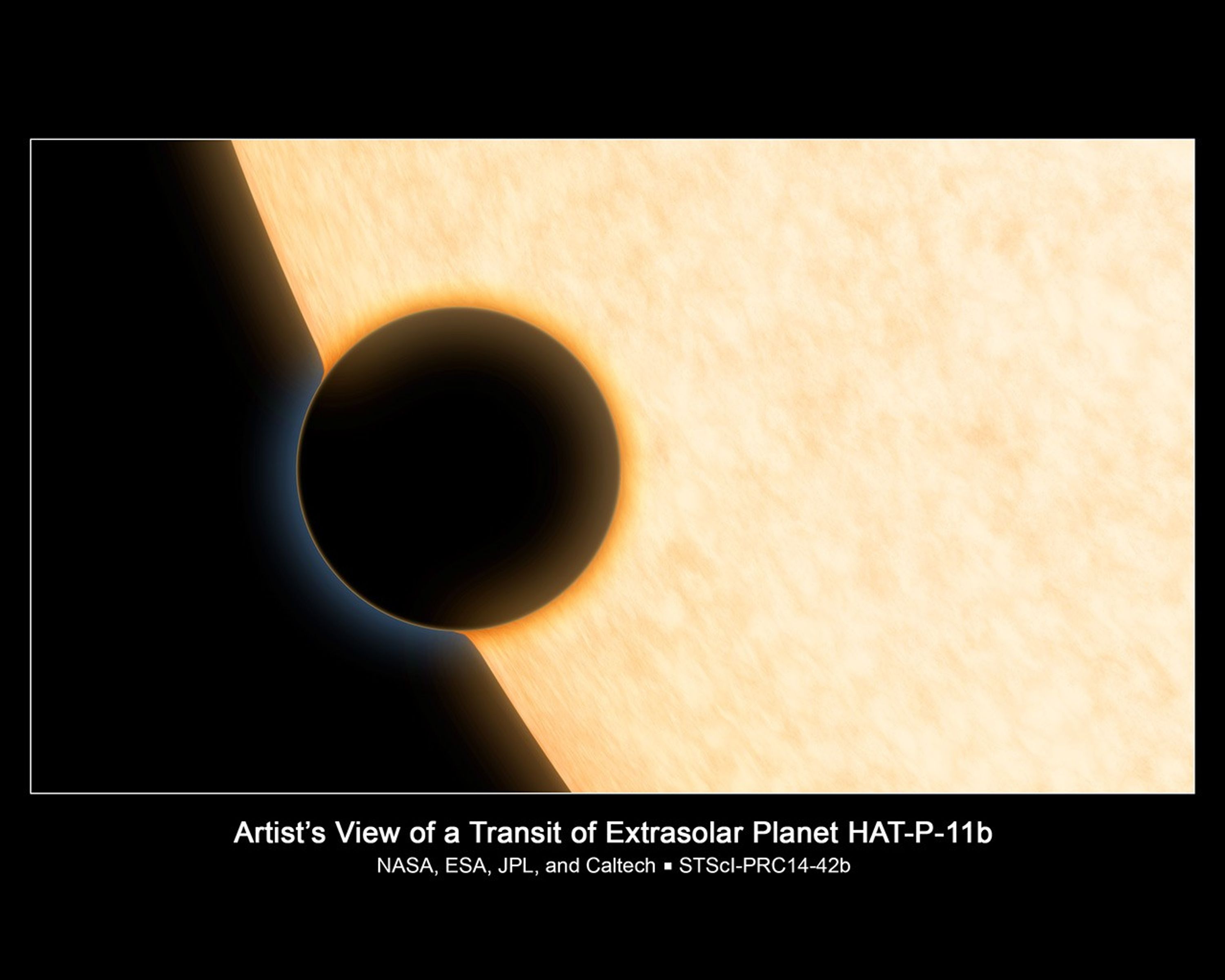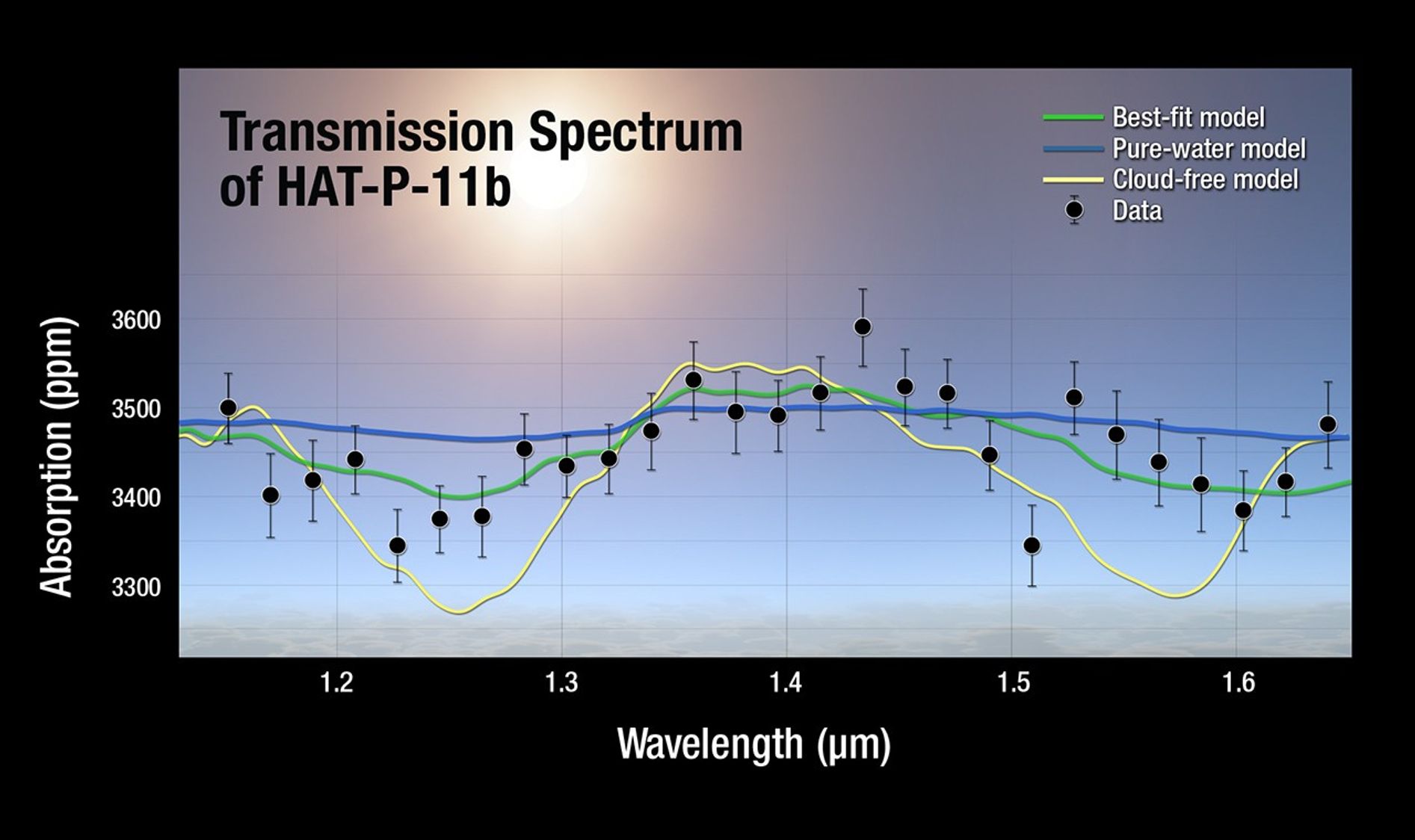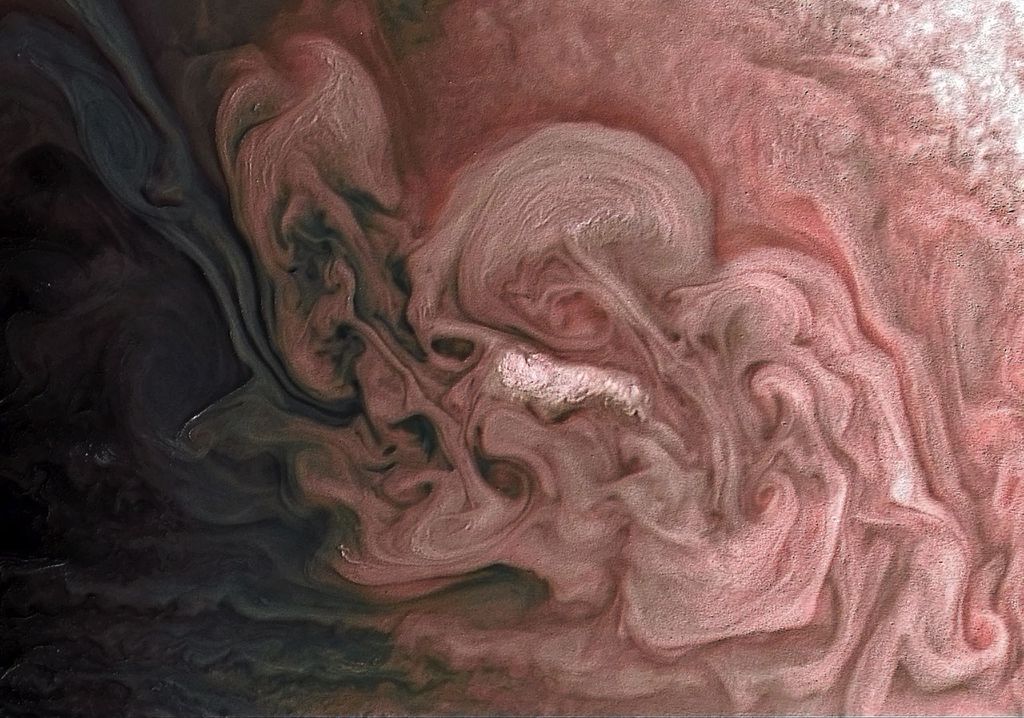1 min read
Artist’s Illustration of Exoplanet HAT-P-11b

A Neptune-size planet with a clear atmosphere is shown crossing in front of its star in this artist's depiction. Such crossings, or transits, are observed by telescopes like NASA's Hubble and Spitzer to glean information about planets' atmospheres. As starlight passes through a planet's atmosphere, atoms and molecules absorb light at certain wavelengths, blocking it from the telescope's view. The more light a planet blocks, the larger the planet appears. By analyzing the amount of light blocked by the planet at different wavelengths, researchers can determine which molecules make up the atmosphere.
The problem with this technique is that sometimes planets have thick clouds that block any light from coming through, hiding the signature of the molecules in the atmosphere. This is particularly true of the handful of Neptune-sized and super-Earth planets examined to date, all of which appear to be cloudy.
As a result, astronomers were elated to find clear skies on a Neptune-sized planet called HAT-P-11b, as illustrated here. Without clouds to block their view, they were able to identify water vapor molecules in the planet's atmosphere. The blue rim of the planet in this image is due to scattered light, while the orange rim on the part of the planet in front of the star indicates the region where water vapor was detected.
About the Object
- R.A. PositionR.A. PositionRight ascension – analogous to longitude – is one component of an object's position.19h 50m 50s.25
- Dec. PositionDec. PositionDeclination – analogous to latitude – is one component of an object's position.+48° 04' 51".08
- ConstellationConstellationOne of 88 recognized regions of the celestial sphere in which the object appears.Cygnus
- DistanceDistanceThe physical distance from Earth to the astronomical object. Distances within our solar system are usually measured in Astronomical Units (AU). Distances between stars are usually measured in light-years. Interstellar distances can also be measured in parsecs.120 light-years (37 parsecs)
About the Data
- Data DescriptionData DescriptionProposal: A description of the observations, their scientific justification, and the links to the data available in the science archive.
Science Team: The astronomers who planned the observations and analyzed the data. "PI" refers to the Principal Investigator.Note: Observations from NASA's Kepler Mission and Spitzer Space Telescope contributed to the discovery of HAT-P-11b. Hubble data for this release of HAT-P-11b were obtained from the following HST proposal: 12449: D. Deming (University of Maryland, College Park, and NASA Ames/Astrobiology Institute), H. Knutson (Caltech), N. Madhusudhan (University of Cambridge/Institute of Astronomy), and K. Todorov (ETH Zurich). The science team comprises: J. Fraine (University of Maryland, College Park, Institute of Astrophysics/Pontificia Universidad Católica de Chile, and Caltech), D. Deming (University of Maryland, College Park, and NASA Ames/Astrobiology Institute), B. Benneke and H. Knutson (Caltech), A. Jordan and N. Espinoza (Institute of Astrophysics/Pontificia Universidad Católica de Chile), N. Madhusudhan (University of Cambridge/Institute of Astronomy), A. Wilkins (University of Maryland, College Park), and K. Todorov (ETH Zurich). - InstrumentInstrumentThe science instrument used to produce the data.HST>WFC3/IR
- Exposure DatesExposure DatesThe date(s) that the telescope made its observations and the total exposure time.October 18, 2012, and December 15/16, 2012
- FiltersFiltersThe camera filters that were used in the science observations.Grating: G141
- Object NameObject NameA name or catalog number that astronomers use to identify an astronomical object.HAT-P-11b
- Object DescriptionObject DescriptionThe type of astronomical object.Neptune-size planet outside our solar system (exoplanet)
- Release DateSeptember 24, 2014
- Science ReleaseNASA Telescopes Find Clear Skies and Water Vapor on Exo-Neptune
- Credit
Related Images & Videos

Artist's Illustration of Clear Skies on Exoplanet HAT-P-11b
Scientists were excited to discover clear skies on a relatively small planet, about the size of Neptune, using the combined power of NASA's Hubble, Spitzer, and Kepler space telescopes. The view from this planet – were it possible to fly a spaceship into its gaseous layers – is...

Artist's Illustration of HAT-P-11b Transmission Spectrum Plot
A plot of the transmission spectrum for exoplanet HAT-P-11b, with Kepler, Hubble WFC3, and Spitzer transits combined. The results show a robust detection of water absorption in the WFC3 data. Transmission spectra of selected atmospheric models are plotted for comparison.
Share
Details
Claire Andreoli
NASA’s Goddard Space Flight Center
Greenbelt, Maryland
claire.andreoli@nasa.gov






























